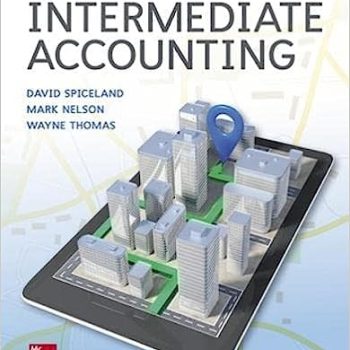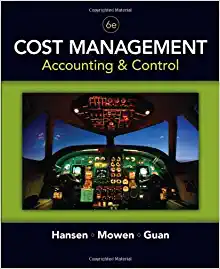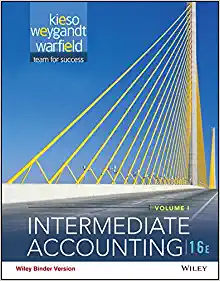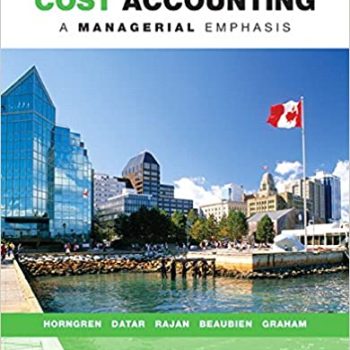Solution Manual For Advanced Accounting 12Th Edition By Hoyle Schaefer and Doupnik
ISBN-10 : 0077862228, ISBN-13 : 978-0077862220
Chapter 1
the equity method of accounting for investments
Chapter Outline
- Three methods are principally used to account for an investment in equity securities along with a fair value option.
- Fair value method: applied by an investor when only a small percentage of a company’s voting stock is held.
- Income is recognized when the investee declares a dividend.
- Portfolios are reported at fair value. If fair values are unavailable, investment is reported at cost.
- Consolidation: when one firm controls another (e.g., when a parent has a majority interest in the voting stock of a subsidiary or control through variable interests, their financial statements are consolidated and reported for the combined entity.
- Equity method: applied when the investor has the ability to exercise significant influence over operating and financial policies of the investee.
- Ability to significantly influence investee is indicated by several factors including representation on the board of directors, participation in policy-making, etc.
- GAAP guidelines presume the equity method is applicable if 20 to 50 percent of the outstanding voting stock of the investee is held by the investor.
Current financial reporting standards allow firms to elect to use fair value for any new investment in equity shares including those where the equity method would otherwise apply. However, the option, once taken, is irrevocable. Investee dividends and changes in fair value over time are recognized as income.
On February 14, 2013, the FASB issued a Proposed Accounting Standards Update (ASU) entitled, Recognition and Measurement of Financial Assets and Financial Liabilities. The proposed ASU would eliminate the fair-value option for investments that qualify for equity method treatment. Fair-value accounting, however, would be extended to “equity method” investments that meet the criteria for classification as held for sale.
- Accounting for an investment: the equity method
- The investment account is adjusted by the investor to reflect all changes in the equity of the investee company.
- Income is accrued by the investor as soon as it is earned by the investee.
- Dividends declared by the investee create a reduction in the carrying amount of the Investment account. The text assumes all investee dividends are declared and paid in the same reporting period.
- Special accounting procedures used in the application of the equity method
- Reporting a change to the equity method when the ability to significantly influence an investee is achieved through a series of acquisitions.
- Initial purchase(s) will be accounted for by means of the fair value method (or at cost) until the ability to significantly influence is attained.
- At the point in time that the equity method becomes applicable, a retrospective adjustment is made by the investor to convert all previously reported figures to the equity method based on percentage of shares owned in those periods.
- This restatement establishes financial statement comparability across years.
- Investee income from other than continuing operations
- The investor recognizes its share of investee reported other comprehensive income (OCI) through the investment account and the investor’s own OCI.
- Income items such as extraordinary gains and losses and discontinued operations that are reported separately by the investee should be shown in the same manner by the investor. The materiality of these other investee income elements (as it affects the investor) continues to be a criterion for separate disclosure.
- Investee losses
- Losses reported by the investee create corresponding losses for the investor.
- A permanent decline in the fair value of an investee’s stock should be recognized immediately by the investor as an impairment loss.
- Investee losses can possibly reduce the carrying value of the investment account to a zero At that point, the equity method ceases to be applicable and the fair-value method is subsequently used.
- The investor applies the equity method until the disposal date to establish a proper book value.
- Following the sale, the equity method continues to be appropriate if enough shares are still held to maintain the investor’s ability to significantly influence the investee. If that ability has been lost, the fair-value method is subsequently used.
- Excess investment cost over book value acquired
- The price an investor pays for equity securities often differs significantly from the investee’sunderlying book value primarily because the historical cost based accounting model does not keep track of changes in a firm’sfair value.
- Payments made in excess of underlying book value can sometimes be identified with specific investee accounts such as inventory or equipment.
- An extra acquisition price can also be assigned to anticipated benefits that are expected to be derived from the investment. In accounting, these amounts are presumed to reflect an intangible asset referred to as goodwill. Goodwill is calculated as any excess payment that is not attributable to specific assets and liabilities of the investee. Because goodwill is an indefinite-lived asset, it is not amortized.
- Deferral of unrealized gross profit in inventory
- Profits derived from intra-entity transactions are not considered completely earned until the transferred goods are either consumed or resold to unrelated parties.
- Downstream sales of inventory
- “Downstream” refers to transfers made by the investor to the investee.
- Intra-entitygross profits from sales are initially deferred under the equity method and then recognized as income at the time of the inventory’s eventual disposal.
- The amount of gross profit to be deferred is the investor’s ownership percentage multiplied by the markup on the merchandise remaining at the end of the year.
- Upstream sales of inventory
- “Upstream” refers to transfers made by the investee to the investor.
- Under the equity method, the deferral process for unrealized profits is identical for upstream and downstream transfers. The procedures are separately identified in Chapter One because the handling does vary within the consolidation process.









Reviews
There are no reviews yet.